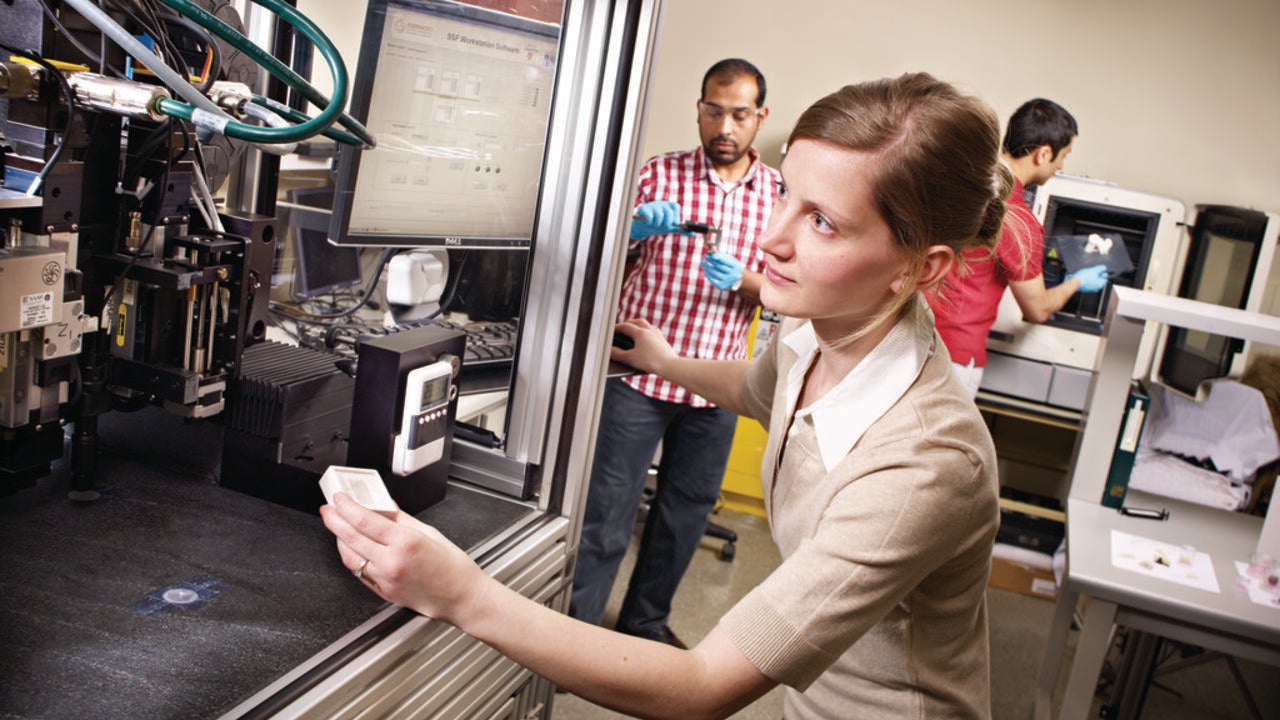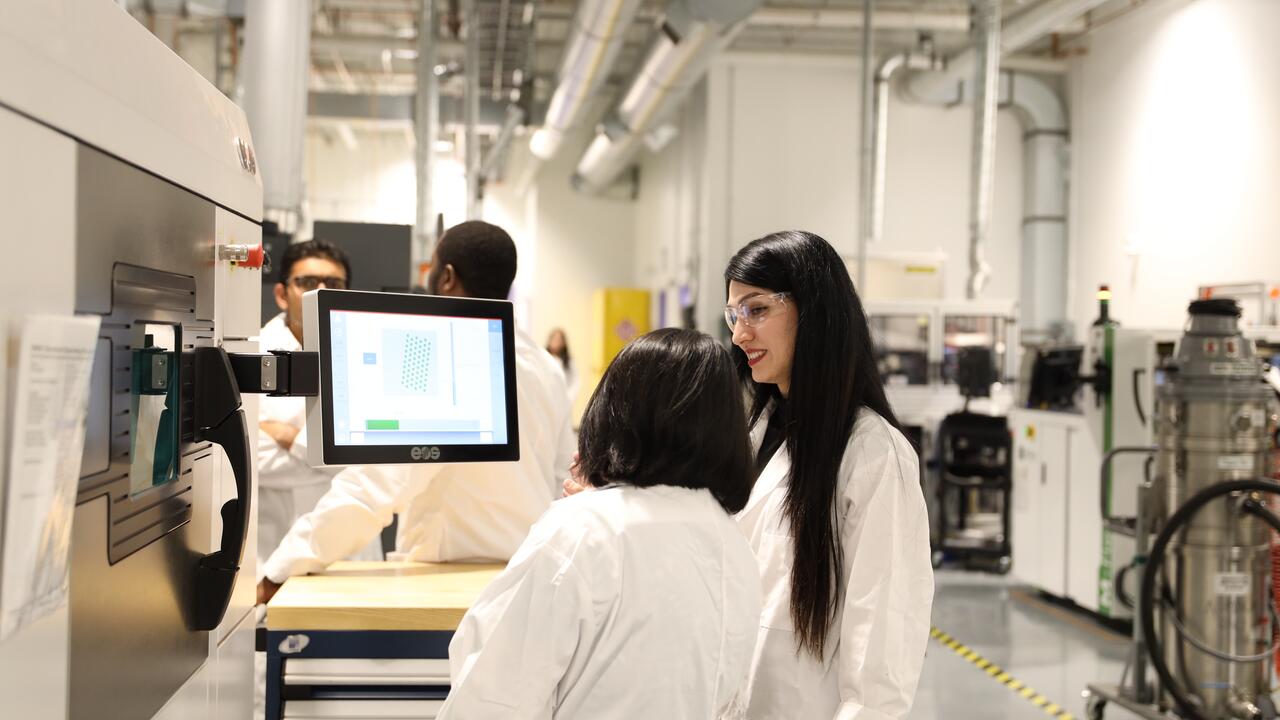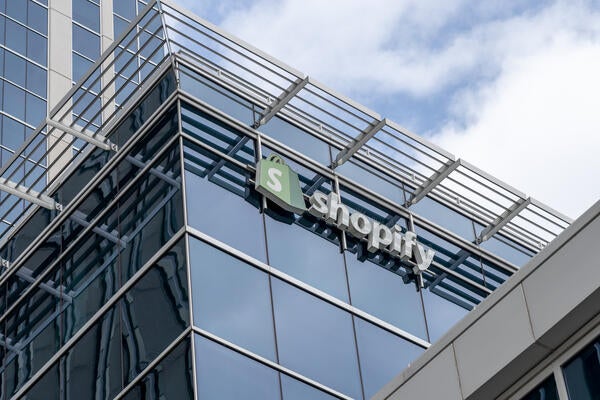
From co-op to world-class research expert
Transforming industries with cutting-edge 3D printing, Dr. Mihaela Vlasea's journey from student to leading researcher inspires innovation in additive manufacturing

Transforming industries with cutting-edge 3D printing, Dr. Mihaela Vlasea's journey from student to leading researcher inspires innovation in additive manufacturing
By Darren McAlmont University RelationsWhen Dr. Mihaela Vlasea’s (BASc ’08, PhD ’14) high school teacher encouraged her to apply to Waterloo’s inaugural mechatronics program, she didn’t imagine that less than 20 years later, she’d be a renowned expert in additive manufacturing (3D printing).
“I didn't really know what mechatronics was, and there was nothing to base my enthusiasm around at that time,” she says, “but I was really intrigued that Waterloo had put this together because every time they put a new program together, it skyrockets into success.”
Taking full advantage of Waterloo’s world-class co-op program, Vlasea completed a few work terms in the automotive sector trying to figure out where she might fit as an engineer after graduation. In her fourth year at Waterloo, Dr. Ehsan Toyserkani, professor of mechanical and mechatronics engineering, invited her to do a co-op term in his lab, which sparked Vlasea’s passion for research.
This led her to consider medical school to become an orthopaedic surgeon. However, after sharing a master’s project where Vlasea got the opportunity to work with orthopaedic surgeons making printed implants for animal and eventually human trials, Toyserkani persuaded her to continue her academic journey at Waterloo.

Dr. Mihaela Vlasea
“I really learned about what it takes to actually be a surgeon in that field, and I really fell in love with 3D printing and additive manufacturing,” she says. “So, I was grateful for that directional change because I think it was a better fit with my background and enthusiasm for research and for manufacturing.”
Vlasea shares that one of the biggest lessons learned during her undergraduate degree was to keep an open mind to different possibilities, learn as much as possible and make the best of every experience. Living by these rules enabled her to flourish in different situations.
After graduating with a PhD in mechanical and mechatronics engineering, Vlasea moved to the U.S. to work at the National Institute for Standards and Technology, where she collaborated with a team on a new printing machine with laser-based processes — a new class of technology than the binder-based processes she was used to.
In 2015, there was a massive amount of interest in 3D printing and additive manufacturing, which led Vlasea to where she is today.
“I kept my mind open and thought I would love to go back to academia because that's where I thought I could innovate and learn at the same time,” she says. “A lot of times in industry, you can innovate, but you're always giving back, as opposed to continuously learning.”
After considering multiple offers from across different industries and research institutions, Vlasea returned to Waterloo to nurture the existing ecosystem of additive manufacturing technologies. “I'm glad I was able to help put important bricks in the already-strong foundation in place at Waterloo and grow it from there, along with my colleagues,” she says.

From colourful polymer printing to metal additive manufacturing of industrial components, these are just some visual examples of components that can be produced.
Vlasea explains that her research and work involve transforming materials which are typically in a powder state into objects that have very complex geometries and have applications that range from aviation, biomedical, defense, mining and many more.
Today, she holds Canada Research Chair in sustainable additive manufacturing and is co-director of the Multi-Scale Additive Manufacturing (MSAM) Lab with Toyserkani — the same professor who saw and nurtured her talent many years earlier. Together, they have a vision of advancing the engineering and manufacturing community in Canada by enabling industry and students to explore additive manufacturing technologies in a research and development playground conducive of innovation.
Having grown to be the largest academic lab of its kind in Canada with more than $25 million in infrastructure, the MSAM Lab is developing technologies for the future by significantly transforming both large and small-scale advanced manufacturing while accelerating sustainability.

The state-of-the art facilities at MSAM include specialized large- and medium-size equipment to produce metal parts. The equipment is operated by trained staff and scientists, with students being mentored on experimental planning, build preparation, design workflows and quality assurance algorithms.
“We typically make connections across the supply chain to provide solutions that are complete. For instance, if there’s an automotive partner that wants to produce a gear or some transmission components, we have relationships with other industry partners that produce those customizable materials and help us create end to end solutions,” Vlasea says.
Looking ahead, she is excited to leverage data-driven models to enhance general modeling and material science theory for product design, development and commercialization.
Learn more about the MSAM Lab.

Read more
Waterloo’s MSAM Lab is increasing capacity for research, training and partnerships to meet growing demands in the field of advanced manufacturing

Read more
Applying a broad range of tech skills and innovations, Waterloo’s students and alumni are adding value to Shopify’s merchants

Read more
The team walked away with the overall excellence award after a microgravity experiment aboard an aircraft at the Canada Space Agency headquarters
The University of Waterloo acknowledges that much of our work takes place on the traditional territory of the Neutral, Anishinaabeg, and Haudenosaunee peoples. Our main campus is situated on the Haldimand Tract, the land granted to the Six Nations that includes six miles on each side of the Grand River. Our active work toward reconciliation takes place across our campuses through research, learning, teaching, and community building, and is co-ordinated within the Office of Indigenous Relations.